Happy 80th Birthday to the greatest mountaineer of all time, Reinhold Messner. An Italian climber, explorer, and author from the German-speaking province of South Tyrol, he made the first solo ascent of Mount Everest and, along with Peter Habeler, the first ascent of Everest without supplemental oxygen. He was the first person to climb all 14 eight-thousanders, doing so without supplementary oxygen. Messner was the first to cross Antarctica and Greenland with neither snowmobiles nor dog sleds and also crossed the Gobi Desert alone. READ some details about his life… (1944)
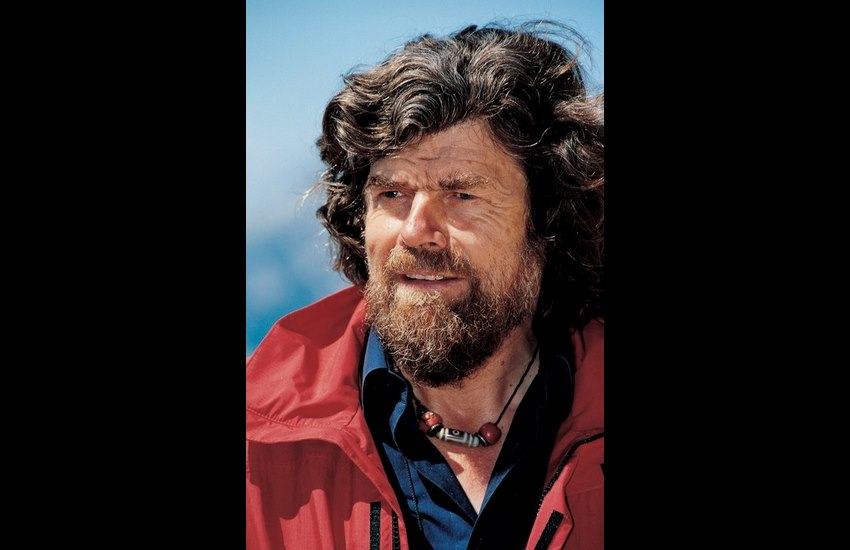
The one-term member of European Parliament on behalf of Italy published 80 books about his life and adventures, most of which involve climbing.
Before his first major Himalayan climb in 1970, Messner had made a name for himself mainly through his achievements in the Alps. Between 1960 and 1964, he led over 500 ascents, most of them in the Dolomites, and many of them involving first-ever ascents of difficult faces.
In 2003 Messner started work on a project for a mountaineering museum. On 11 June 2006, the Messner Mountain Museum (MMM) opened. This series of remote locations unite the stories of the growth and decline of mountains, culture in the Himalayan region, and the history of South Tyrol.
More Good News on this date:
- Ken Kesey was born, the American author of One Flew Over the Cuckoo’s Nest and member of the psychedelic literary posse, the Merry Pranksters (1935-2001)
- The first Space Shuttle, Enterprise, was unveiled by NASA–with the cast of TV’s Star Trek present–after a write-in campaign succeeded in changing the name from Constitution (1976)
- Vanessa Williams was crowned the first black Miss America (1983)
- North Korea, South Korea, Estonia, Latvia, Lithuania, and Micronesia joined the United Nations (1991)
- The last Russian troops departed from Poland (1993)
- Heather Whitestone of Alabama became the first deaf woman crowned as Miss America (1994)
- Northern Ireland‘s main Protestant party joined peace talks, bringing together all players for the first time (1997)
- President Clinton lifted 50-year restrictions on trade, travel & banking with North Korea (1999)
481 years ago today, the first book in the Finnish language was published. Called The Abckiria, or the “ABC Book” it taught Finnish peasants of the early Rennaisance how to read and spell, as well as Lutheran prayers, the Lord’s prayer, and the Ten Commandments. It was written by Mikael Agricola, a bishop and Lutheran Reformer, who stressed the importance of literacy among good Christians.
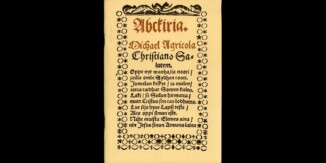
Finnish is believed to have evolved from a wave of westward movement out of the region around the Ural Mountains in Russia. Unlike its neighboring Danish, Swedish, and Norwegian, Finnish is more closely related to Estonian, Livonian, the language of the Republic of Karelia in Russia, and Hungarian. These are known as the Uralic languages.
In writing the Abckiria, Agricola’s intention was that each phoneme should correspond to one letter, he failed to achieve this goal in various respects. For example, k, c, and q were all used for the phoneme /k/. Agricola also did not consistently represent vowel length in his orthography.
Finnish had to be revised because of Agricola’s inconsistencies, and Finnish lost some vowel tones along the way, which survive as a remnant dialect in Western Finland alone. The beginning of the book is quite famous in the country.
“Learn now, old and young, who have a fresh heart, God’s commandments and the mind, so that you shall know the Finnish language. Law, it makes the soul fearful, but Christ soothes it again. So read from here good child, the beginning of learning without obstacles.” (1563)
Happy 39th birthday to The Great 8, Alexander Ovechkin. Playing left wing for the Washington Capitals since 2004, he is quite simply among the greatest goal scorers in the history of ice hockey, and is believed to have a real shot of overtaking Wayne Gretzky’s goal record. He has won the Hart Memorial Trophy for Most Valuable Player three times (in 2008, 2009, and 2013), the Lester B. Pearson Award for Best Player as voted on by the National Hockey League Players’ Association three times (2008, 2009, 2010) and the Maurice “Rocket” Richard Trophy, awarded annually to the NHL’s leading goal scorer, an NHL-record nine times.

– CC 2.0. AlexanderJonesi
His mother was a world champion and two-time Olympic gold medalist in basketball, and his father was also a professional footballer in Russia. In early childhood, he would not allow his parents to switch the channel if there were a hockey game on. Moving to a soulless high-rise building outside Moscow, he attended public school #596, infamous for military discipline and a “tyrannical” principal. Seeing many of his peers going to jail or dying of drug overdoses, he dove into sport with his head, arms, and legs, not allowing time for anything else.
A highly touted prospect after arriving in the NHL from Dynamo Moscow, Ovechkin was selected by the Capitals first in the 2004 NHL Entry Draft. In the 2005–06 season, Ovechkin’s first with the Capitals, he scored 52 goals and 54 assists to lead all rookies in points, capturing the Calder Memorial Trophy as rookie of the year and finishing third overall in league scoring.
In the 2018 season “Ovi” scored his 600th career goal, and made his 1,000th appearance, the first in Capitals history to do so. That season he finally won the Stanley Cup with the Washington Capitals, beating their longtime rival the Pittsburgh Penguins, before a rather one-sided series against the Vegas Golden Knights to lift the cup.
In April of 2022, and 36 years and 215 days of age, he became the oldest player to score 50 goals in a season. (1985)
13 years ago today, the Occupy Wall Street movement began in Zuccotti Park, in the heart of New York’s financial district.

Within weeks, encampments sprang up around the world to join the protest against social and economic inequality for “the 99 percent”. Although many consider the movement to be a failure, it did raise awareness and actually resulted in some lasting and positive change around the issue of medical debt. They erased $ 30 million in debt for random Americans, all within four years. WATCH a video about ‘Occupy’ on the 10-year anniversary… (2011)
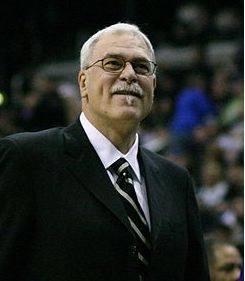
And, Happy 79th Birthday to legendary NBA coach Phil Jackson, who won an amazing eleven National Basketball titles as a coach: six with Michael Jordan the Chicago Bulls and five with Kobe Bryant and the Los Angeles Lakers. (1945)
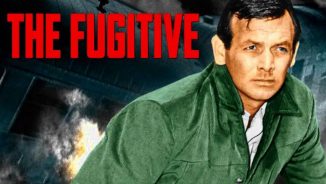
And, 61 years ago today, The Fugitive first aired on ABC. The American drama series starred David Janssen as Dr. Richard Kimble, a physician who is wrongfully convicted of his wife’s murder and sentenced to receive the death penalty. Nominated for five Emmy Awards, it won for Outstanding Dramatic Series in 1966, before ending the following year. The mysterious “One-Armed Man”, alongside 3-time Emmy-nominated Janssen’s understated performance earned the show a spot on the 2002 TV Guide list of The 50 Greatest TV Shows of All Time. Typically, The Fugitive was able to attract two or more guest stars per episode, legends from stage and screen, like Robert Duvall, Mickey Rooney, Dabney Coleman, Ed Asner, William Shatner, Telly Savalas, Ed Begley, Jack Klugman, Leslie Nielsen, Kurt Russell, Charles Bronson, Ossie Davis, Angie Dickinson, Diane Ladd, Hope Lange, Carol Lawrence, Carroll O’Connor, Vin Scully, Brenda Vaccaro, and Tuesday Weld. (1963)
75 years ago today, Wile E. Coyote and the Road Runner first debuted in a Merrie Melodies cartoon called Fast and Furry-ous.

The duo went on to star in 49 cartoons and theatrical shorts, and in each episode, the Coyote repeatedly attempts to catch and eat the fast-running ground bird, but never succeeds. He uses absurdly complex contraptions, often devices from a mail-order company called the Acme Corporation, to try to catch his prey, which all comically backfire, leaving the Coyote injured in slapstick fashion.
Always taking place in the natural habitat of the southwest American desert, one running gag involved the Coyote falling from a high cliff. After he goes over the edge, the rest of the scene, shot from a bird’s-eye view, shows him falling into a canyon so deep, that his figure is eventually lost to sight, except for a dust cloud rising from the canyon floor where he hits—sometimes followed by an anvil.
The characters were created for Warner Bros. by writer Michael Maltese (though dialogue was rarely used, except for the signature sound, ‘Beep, Beep’) and animation director Chuck Jones (who later created a film and TV series with the characters—and also pitted the Coyote against Bugs Bunny in more cartoons). Warner Bros. is reportedly developing Coyote vs. Acme into a Wile E. Coyote movie with The Lego Batman Movie director Chris McKay slated to produce. Jones based the Coyote on Mark Twain’s book Roughing It, in which Twain described the coyote as “a long, slim, sick and sorry-looking skeleton” that is “a living, breathing allegory of Want. He is always hungry.” Watch some highlights of their first short on YouTube, here, or another compilation here. (1949)
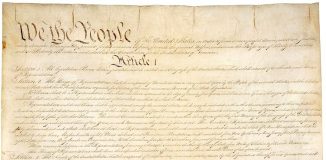
Also, 237 years ago today, the final draft of the United States Constitution, a blueprint for how the nascent government would function, was completed and signed in Philadelphia, Pennsylvania. The framers wisely separated and balanced governmental powers to safeguard liberty and equality, the interests of majority rule and minority rights, and the federal and state governments. Though it began with the now-famous phrase, “We the people,” there were many disappointed delegates who refused to sign the draft, due to certain compromises.
The Great Compromise ended the stalemate between “patriots” (who favored states’ rights) and “nationalists” (who favored stronger federal powers) and the question of how to apportion for representation in Congress. Numerous other compromises accommodated the factions but also led to only 39 of the 55 delegates agreeing to sign the document. The final arbiter of law in the nation, The Constitution’s first three words—We the People—affirmed that the government of the United States exists to serve its citizens.
RELATED: National Archives to Host Sleepovers With the Declaration of Independence
The Constitution has been amended 27 times (the first ten, known as the Bill of Rights, protected personal and state freedoms by restricting government power) to meet the challenges of a profoundly changing country. It is the model on which the constitutions of other nations were based. Written on parchment, the original four pages are stored and viewable at the National Archives in Washington, DC. (1787)
And, 104 years ago today, the National Football League was founded in Canton, Ohio, by 15 men who showed up to an automobile dealer’s showroom. Following World War I and the Spanish Flu pandemic, there was a hunger for things to return to normal. The men, representing 10 football franchises in Midwestern states answered the call to start a league. Only two survive to this day—the Racine Cardinals, now the Arizona Cardinals, and George Halas’s team, the Bears, which moved to Chicago. It was Halas who soon after made a motion to change the name of the association to something pithier — the National Football League.
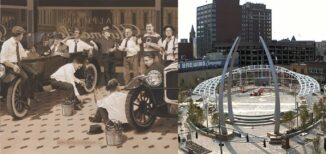
“Thinking back to that meeting in Canton, Ohio, I am pretty sure none of us had the remotest idea what we were starting,” Halas said celebrating the 50th anniversary in 1970.
Besides Halas, the most memorable name present was Jim Thorpe, the famed Olympian athlete who was now the Canton Bulldogs’ star halfback. That team’s owner, Ralph Hay, owned the car dealership and called the meeting that day. A $100 fee was required to join the association, and Thorpe, who was unanimously named president, was instructed to form a committee to work with a lawyer on a constitution, bylaws, and rules for the association.
A silver cup was donated as a prize for the team that won the association’s championship: “This gave all of us a feeling we were involved in a project that had dignity and stability,” Halas recalled.
Less than three miles away sits the Pro Football Hall of Fame, where Thorpe and Halas are today enshrined.
A block from where that fateful meeting was held, on decorative pylons that are part of the new Canton Centennial Plaza, the names of every man who ever played in the NFL during its first 100 years — more than 25,000 of them — are inscribed. And, across the street from the former car dealership is a new mural depicting the meeting.
The opening of the new 2-acre park and outdoor gathering space in Canton was postponed due to COVID-19. It features two stages, a 60-foot video screen and café. Along with the engraved player names, visitors will be able to use cell phones to access digital information about any player listed. The 11 player-recognition pylons – one for each decade — were dedicated one year ago.
Along the route between the NFL Hall of Fame only 3 miles away, a new public art walking tour called “The Eleven,” chronicles the 11 greatest moments in pro football history. 9 of the works are finished—including a commemoration of the 1967 “Ice Bowl” Super Bowl at Green Bay’s frigid (-19 below) Lambeau Field. Another commemorates “The Draft,” with Bert Bell, the owner/founder of the Philadelphia Eagles and later NFL commissioner, who in 1936 came up with the idea for the draft. CHECK OUT the NFL video tribute to 100 years… (1920)
Share the Milestones, Memories, and Moments…



















